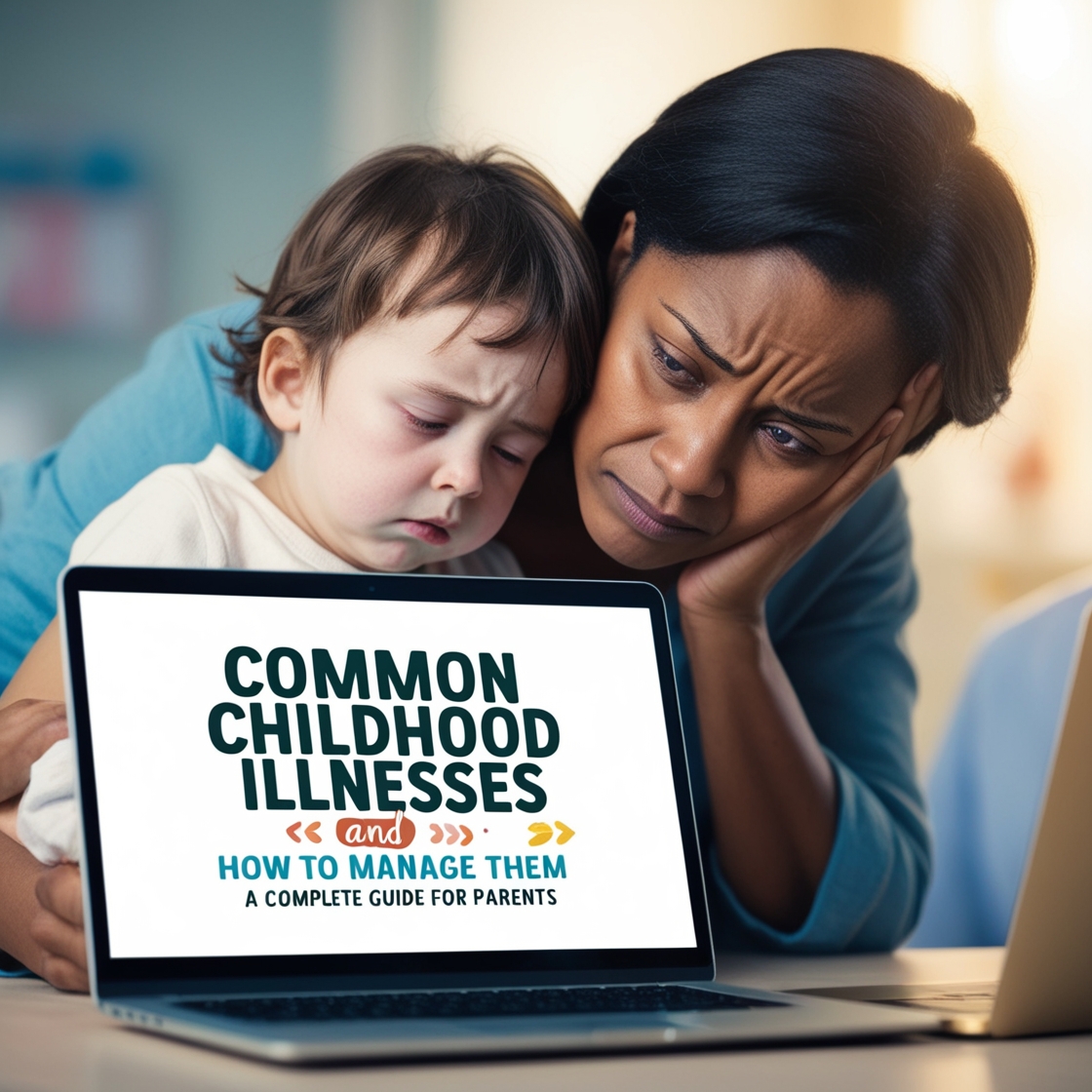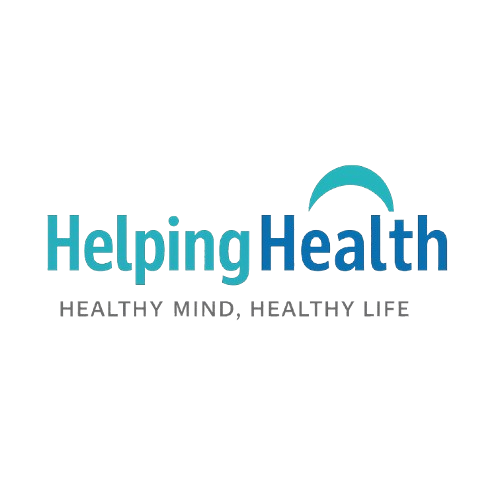
Common Childhood Illnesses and How to Manage Them: A Complete Guide for Parents
Learn about the most common childhood illnesses, their symptoms, prevention tips, and treatments. Helping Health brings you expert advice on managing children’s health naturally and medically.
Introduction
Raising a healthy child is one of the biggest responsibilities of every parent. Children, especially during their early years, are more vulnerable to infections and diseases because their immune systems are still developing. From common colds to chronic c
onditions, childhood illnesses can cause stress for both parents and kids.
At Helping Health, we aim to provide trusted information about children’s health, including diseases, prevention, lifestyle tips, and treatments. In this blog, we will explore the most common childhood illnesses, their symptoms, and effective management strategies so parents can make informed decisions.
Why Children Are More Prone to Illnesses
Children’s immune systems are still learning to recognize and fight harmful pathogens. Some key reasons include:
-
Weaker immune system compared to adults.
-
Exposure in schools or playgrounds where infections spread quickly.
-
Poor hygiene habits like not washing hands properly.
-
Nutritional gaps affecting immunity.
Understanding these factors helps parents stay proactive about prevention.
1. Common Cold and Flu in Children
Symptoms
-
Runny or blocked nose
-
Sneezing, coughing
-
Mild fever
-
Sore throat
-
Fatigue
Management
-
Encourage rest and hydration.
-
Use saline nasal drops for congestion.
-
Honey (for children above 1 year) can soothe coughs.
-
Seek medical care if high fever persists.
Prevention
-
Teach kids to wash hands frequently.
-
Boost immunity with fruits, vegetables, and enough sleep.
2. Ear Infections
Ear infections are very common in toddlers and children.
Symptoms
-
Ear pain
-
Irritability, crying more than usual
-
Trouble sleeping
-
Hearing difficulty
Management
-
Warm compress can reduce pain.
-
Doctor-prescribed antibiotics if bacterial.
-
Avoid bottle-feeding while lying flat.
Prevention
-
Keep children away from second-hand smoke.
-
Breastfeeding reduces ear infection risk.
3. Asthma in Children
Asthma is one of the leading chronic conditions in children.
Symptoms
-
Wheezing or whistling sound while breathing
-
Shortness of breath
-
Frequent coughing, especially at night
-
Chest tightness
Management
-
Create an asthma action plan with your doctor.
-
Avoid triggers (dust, smoke, pollen, pets).
-
Use inhalers or nebulizers as prescribed.
Prevention
-
Keep indoor air clean.
-
Encourage regular check-ups.
4. Childhood Obesity
Childhood obesity is rising globally and can lead to future health risks like diabetes and heart disease.
Symptoms/Signs
-
Excess body weight for age and height
-
Breathlessness after mild activity
-
Poor self-esteem
Management
-
Balanced diet with fewer processed foods.
-
Encourage daily physical activity (play, sports).
-
Limit screen time.
Prevention
-
Family-based healthy lifestyle.
-
Replace sugary drinks with water or fresh juice.
5. Chickenpox
Chickenpox is a viral infection but preventable with vaccination.
Symptoms
-
Itchy rash and blisters
-
Fever
-
Loss of appetite
-
Fatigue
Management
-
Keep nails short to prevent skin infection from scratching.
-
Use calamine lotion for itchiness.
-
Rest and fluids.
Prevention
-
Chickenpox vaccine is highly effective.
6. Hand, Foot, and Mouth Disease (HFMD)
HFMD spreads quickly among children under 5 years.
Symptoms
-
Painful sores in the mouth
-
Rash on hands, feet, and buttocks
-
Fever
-
Irritability
Management
-
Hydration and soft foods to ease mouth pain.
-
Over-the-counter pain relief (consult doctor).
Prevention
-
Good hand hygiene.
-
Avoid sharing utensils and toys during outbreaks.
7. Allergies in Children
Food allergies, dust, and pollen are common triggers.
Symptoms
-
Skin rashes or hives
-
Sneezing, runny nose
-
Stomach cramps, diarrhea
-
Breathing difficulty (severe cases)
Management
-
Identify and avoid allergens.
-
Antihistamines for mild reactions.
-
Emergency epinephrine for severe allergies.
8. Stomach Flu (Gastroenteritis)
A common illness caused by viruses or bacteria.
Symptoms
-
Diarrhea
-
Vomiting
-
Stomach pain
-
Dehydration
Management
-
Oral rehydration solution (ORS).
-
Avoid solid food until vomiting stops.
-
Doctor consultation if dehydration worsens.
Prevention
-
Wash hands before eating.
-
Ensure clean drinking water.
Building a Strong Immune System in Children
Beyond treatment, prevention is the key. A strong immune system protects against most childhood illnesses.
Tips for Boosting Immunity:
-
Provide a balanced diet rich in fruits, vegetables, and whole grains.
-
Encourage daily outdoor play for vitamin D and fitness.
-
Ensure adequate sleep (8–12 hours depending on age).
-
Teach good hygiene practices early.
-
Keep vaccinations up to date.
When to Call a Doctor Immediately
Parents should seek urgent medical help if the child has:
-
High fever not responding to medicines
-
Difficulty breathing
-
Persistent vomiting or diarrhea
-
Unexplained rash
-
Seizures or fainting
Conclusion
Childhood illnesses are a natural part of growing up, but with the right care, most conditions can be managed effectively at home. However, prevention, timely medical attention, and lifestyle changes make a huge difference in long-term health.
At Helping Health, our mission is to guide parents with trusted health advice so children can grow into strong, happy, and healthy adults.
✅ SEO- Keywords to Use:
-
Children’s health
-
Common childhood illnesses
-
Parenting health tips
-
Kids’ immunity booster
-
Child disease prevention
-
Helping Health blog
